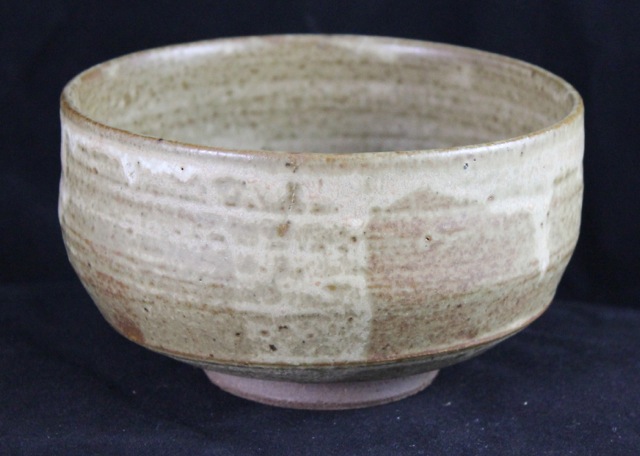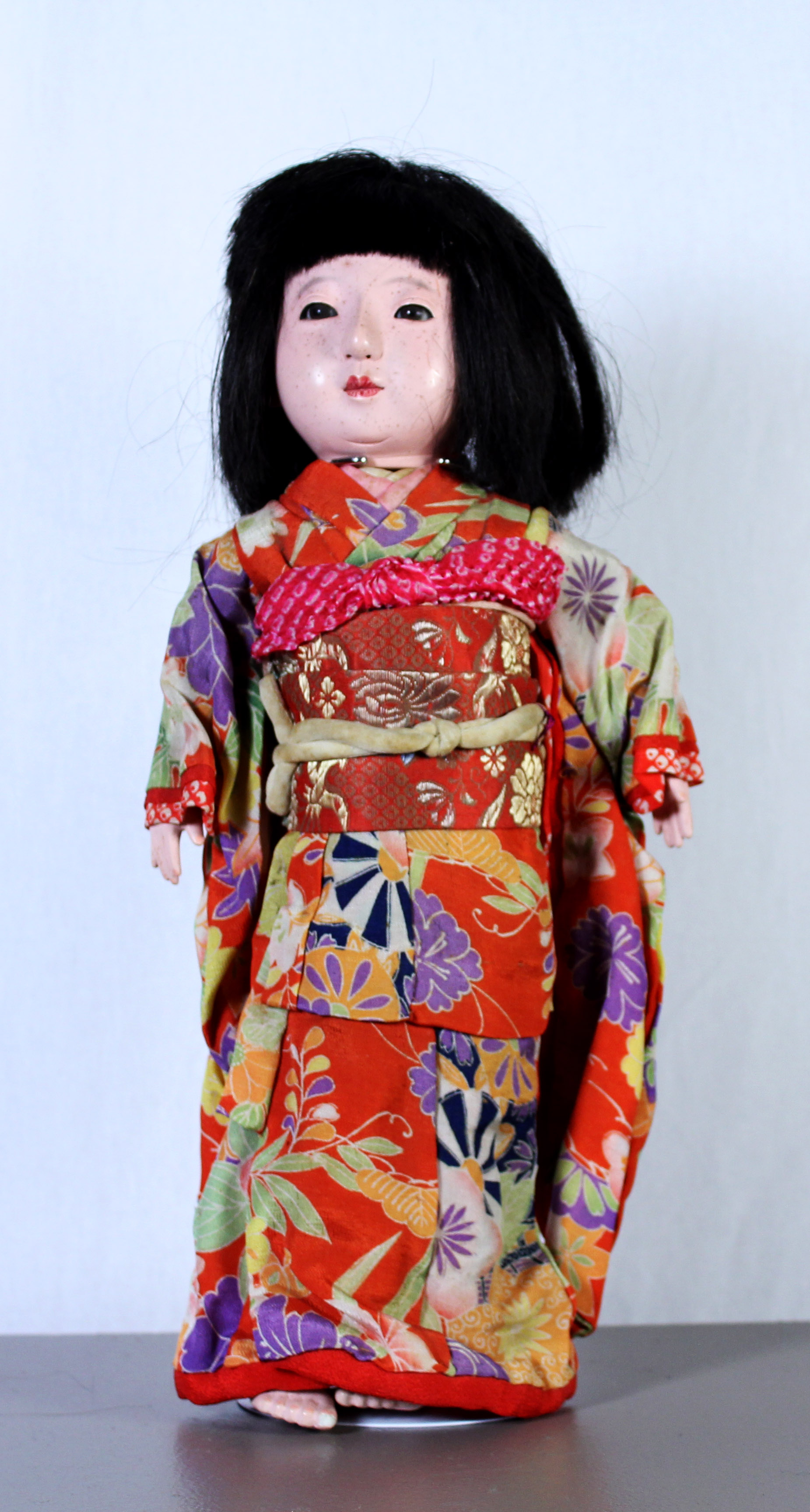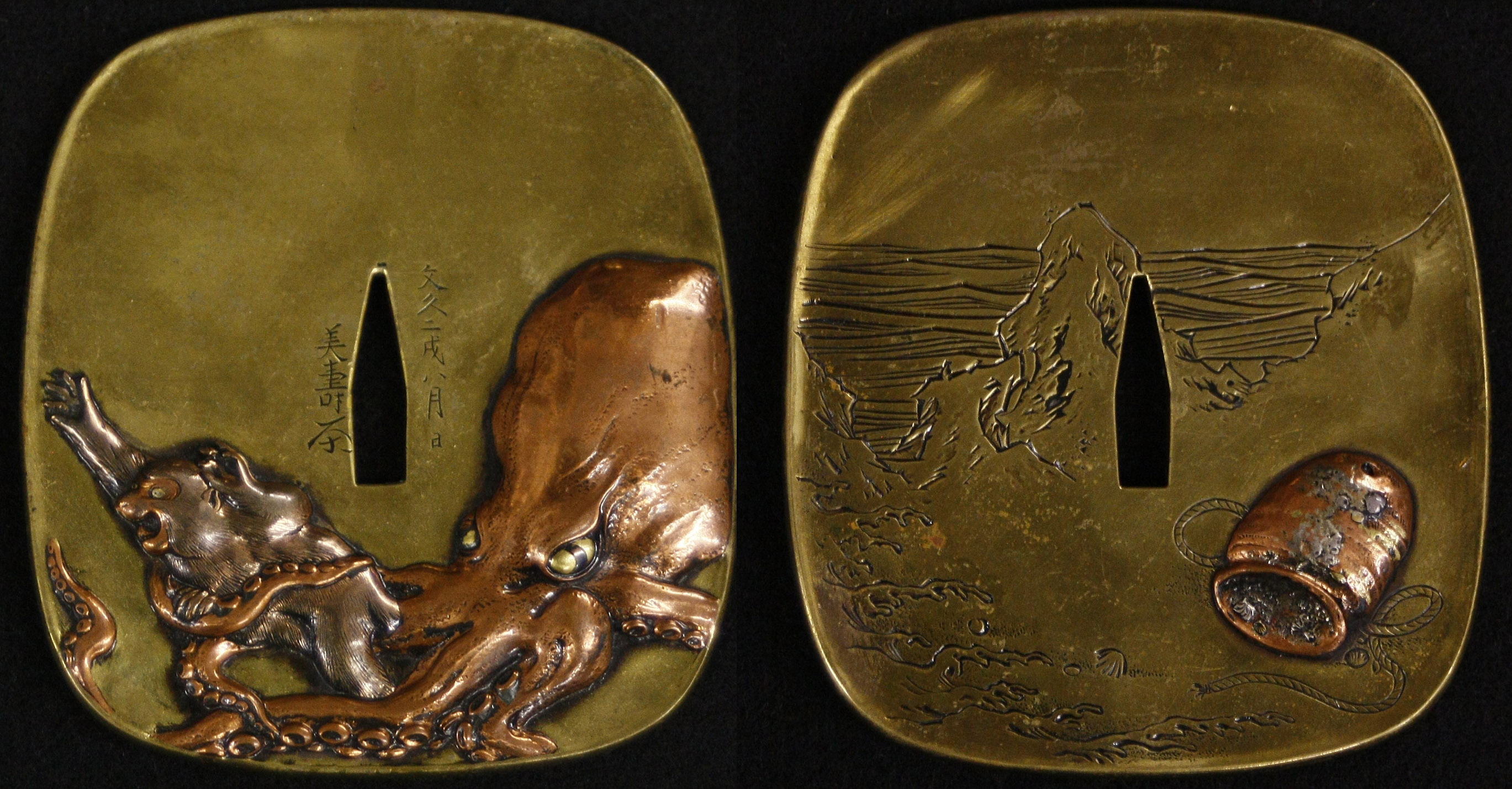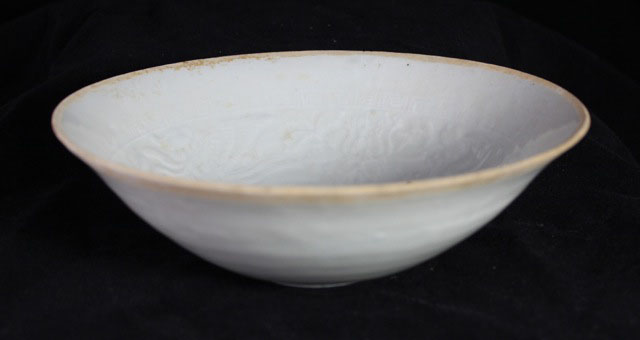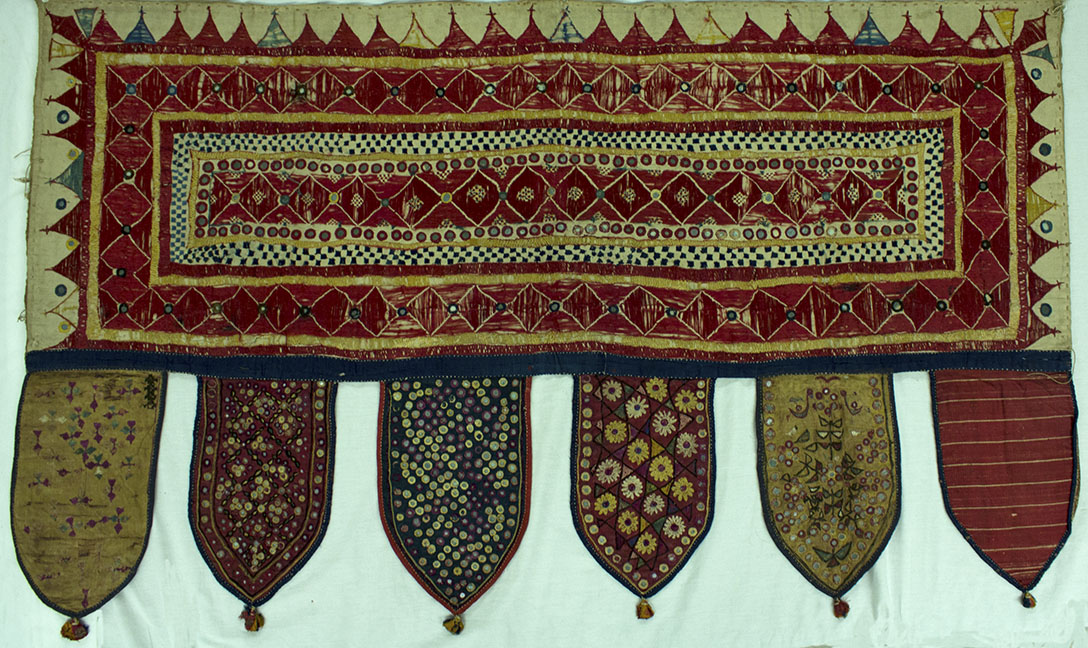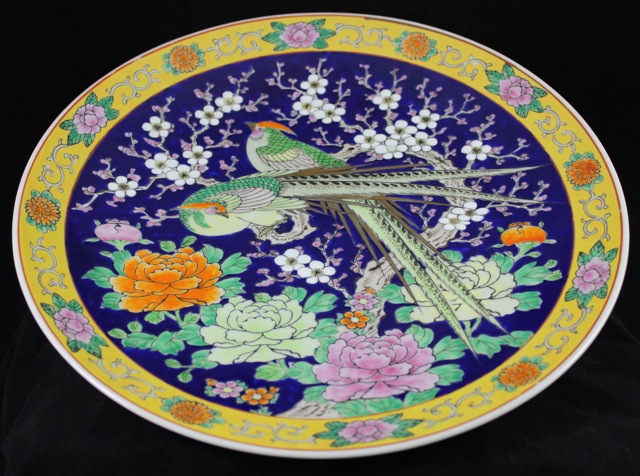Tara is an important deity in Tibetan Buddhism. In Tibet and among Tibetans in Nepal, Tara is a Buddha of compassion and is very commonly worshipped. She is also a savioress, similar to the Bodhisattva Avalokitesvara, who remains on the Earth to guide humanity between the era of the Gautama Buddha and the Maitreya Buddha. [...]
Tea Bowl
Berea College2016-06-29T20:04:22-04:00This tea bowl is in the Tamba style: one of the six ancient styles of Japanese pottery. Tamba pottery has been made for over eight hundred years. This type of pottery gets its glassy look not from a glaze, but from the smoke and ash inside the kiln. Today, it is only made at one [...]
Temmoku Bowl
Berea College2016-06-29T19:43:45-04:00This piece of Temmoku was manufactured in the Fujian province of China during the Song Dynasty. The name Temmoku comes from the Japanese pronunciation of Tianmu Shan, a mountain where Japanese Buddhist Monks came to study Zen Buddhism and took this type of bowl back to Japan. Temmoku is characterized by its iron-oxide glazes, which [...]
Ichimatsu Doll
Berea College2019-05-15T09:05:19-04:00Named after Sanogawa Ichimatsu, an 18th c. Kabuki actor who specialized in female roles, Ichimatsu dolls are an Edo era invention. They portray little Japanese girls and boys in their holiday silk kimonos and are sometimes commissioned by the rich as portraits of their children. The dolls are display objects, not toys, and are usually [...]
Tsuba of a Katana
Berea College2019-05-15T09:05:19-04:00A tsuba is the ring that separates the handle from the blade in traditional Japanese sword making. This tsuba is a great example of late Edo period metalwork. The Edo period was characterized by a united, isolationist Japan and a long era of peace. With the extended period of peace, tsubas reached previously unheard of [...]
Bowl
Berea College2019-05-15T09:05:19-04:00This piece of Dingware was manufactured in Dingzhou, Hebei Province at the height of the Northern Song Dynasty. Dingzhou was a ceramic capital of the Northern Song dynasty, and Dingware was highly prized for its elegance. Before the Song Dynasty Imperial court fled south, Dingware was the tableware for aristocratic families and the Imperial court. [...]
Toran
Susan Romer2019-05-15T09:05:19-04:00Toran is the Sanskrit name of a sacred or honorific gateway. Torans are used both personally, in homes, and sacredly in Buddhist and Hindu architecture. Its typical form is not fabric, as is shown here, but a wood or stone. Especially in Temple entrance ways, torans are sculptural post and lintel systems.This fabric toran was more [...]
Tsuba of a Katana, Long Sword
Berea College2019-05-15T09:05:19-04:00This sixteenth century steel tsuba was crafted for a katana, or what is commonly referred to as a samurai sword. The tsuba is of the Genshu Suruga style and very plain in its overall design. Each tsuba shape has its own name, the simple circular shape being known as Maru Gata. Katanas and other Japanese [...]
Teapot
Berea College2016-06-23T19:09:17-04:00This small nineteenth century teapot is decorated in a style that was developed in the Kyushu region following the sixteenth century Japanese invasion of Korea. With the relocation of skilled Korean potters to the Japanese isles, Satsuma ware developed as a style of Japanese pottery. Though it originally developed as utilitarian, with dark clay [...]
Arita Ware Plate
Berea College2016-06-23T19:00:56-04:00Framed by peonies and plum blossoms, two pheasants grace the center of this dish. The plate is vibrantly colored with rich shades of blue, pink, green, orange, yellow, gold, black, grey, and white. The scene depicted on the plate is heavily influenced by nature, specifically some of the flora and fauna local to the area. [...]


